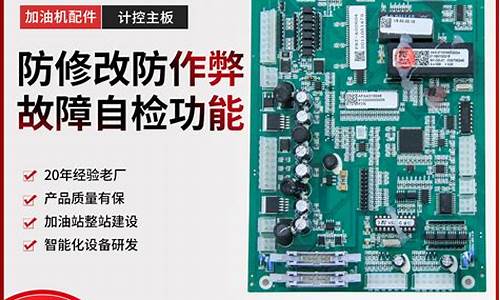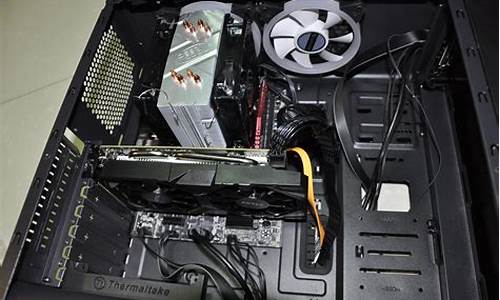用英语怎么说电脑系统-系统用英文
1.关于电脑系统的一些常用英语词汇有那些?
2.电脑用英语怎么说
3.人体的八大系统分别用英语怎么说?
关于电脑系统的一些常用英语词汇有那些?

storage space 存储空间
Timer n.计时器
subdirectory n.子目录
Available a.可用的
structure n.结构
characteristic n.特征,特性
hierarchical a.分层的
Sophistication n.复杂性
issue vt.发行,放出/考试大
Standard n.标准
backslash n.反斜杠
Online n.联机
the root directory 根目录
Job Management 作业管理
perform vt.执行
Sequence n.次序
conjunction n.联合
Assess vt.评估
procedure n.过程
Resource Management 资源管理
tree n.目录树
Oversee vt.监督
term n.术语
Control of I/0 Operation I/0 操作控制
startup vi.启动
Allocation n. 分配
TSRs 内存驻留程序
Undergo vt.经历,经受
locate vt.定位
Error Recovery 错误恢复
sector n.扇区
Memory Management 存储器管理
partition n.分区
interface n.界面
booting n.自举
streamlined a.流线型的
cluster n.簇
unleash vt.释放
CMOS 互补金属氧化物体
unhamperer vt.解脱
emergency disk 应急磁盘
spreadsheet n.电子表格
partition table 分区表
Accessory n.附件
FAT 文件分配表
Notepad n.记事薄
GUI 图形用户接口
Macro Recorder n.宏记录器
command line 命令行
Write n.书写器
icon n.图标
Paint-brush n.画笔
manual n.手册
modem n.调制解调器
dialog boxes 对话框
Solitaire n.接龙
mechanism n.机构,机械,结丰
Reverse n.挖地雷
clipboard n.剪贴板
module n.模块
DDE 动态数据交换
acronym n.缩写字
clumsy a.笨拙的
version n.版本
hot linked 映射的
updatevt.洲一级,更新
real-mode n.实模式
internal command内部命令
standard mode 标准模式
external command 外部命令
directory n.目录
Pentium n.俗称 586,奔腾芯片
sign-on a.提示
framework n.框架,结构
extension name 扩展名
precedence n.优先
document n.文档
uppercase letter 大写字母
workspace n.工作
lowercase letter 小写字母
File Manager 文件管理
volume label 卷标
menu n.菜单
prompt n.提示符
Program Manager 程序管理器
default n.缺省值,默认值
folder n.卷宗
symbol n.符号
divider n.分配者
cursor n.光标
subdivide n.子分配者
built-in a.内置的
tutorial n.教程
电脑用英语怎么说
在英语中,电脑的通用名称为“computer”,发音为/k_m_pju_t_r/,其中,“com”发/k_m/的音,“pu”发/pju_/的音,“ter”发/t_r/的音。
如果需要描述电脑的种类或品牌,还需要根据具体的名称进行发音。例如,“Macbook”发/m_k b_k/的音,“ThinkPad”发/θ__k p_d/的音,等等。
人体的八大系统分别用英语怎么说?
运动系统locomotor system、神经系统nervous system、内分泌系统hormonal system、循环系统circulatory system、呼吸系统respiratory system、消化系统digestive system、泌尿系统urinary system、生殖系统reproductive system。
一、运动系统
由骨、关节和肌肉组成,约占成人体重的60%。全身各骨借关节相连形成骨骼,起支持体重、保护内脏和维持人体基本形态的作用。
骨骼肌附着于骨,在神经系统支配下收缩和舒张,收缩时,以关节为支点牵引骨改变位置,产生运动。骨和关节是运动系统的被动部分,骨骼肌是运动系统的主动部分。
It consists of bones, joints and muscles, accounting for about 60% of adult body weight. Bones and joints of the whole body are connected to form bones, which can support weight, protect viscera and maintain the basic shape of the human body.
Skeletal muscle adheres to bone, contracting and relaxing under the control of nervous system. When contracting, the joint is used as the fulcrum to pull the bone to change its position and produce movement.?
Bone and joint are the passive parts of the motor system, while skeletal muscle is the active part of the motor system.
二、神经系统
神经系统是人体内起主导作用的系统。内、外环境的各种信息,由感受器接受后,通过周围神经传递到脑和脊髓的各级中枢进行整合,再经周围神经控制和调节机体各系统器官的活动,以维持机体与内、外界环境的相对平衡。
神经系统是由脑、脊髓、脑神经、脊神经、和植物性神经,以及各种神经节组成。能协调体内各器官、各系统的活动,使之成为完整的一体,并与外界环境发生相互作用。
The nervous system is the dominant system in the human body. All kinds of information in the internal and external environment are received by the receptor, integrated through the peripheral nerve to all levels of the brain and spinal cord.
and then controlled and regulated by the peripheral nerve to maintain the relative balance between the body and the internal and external environment.
The nervous system is composed of brain, spinal cord, brain nerve, spinal nerve, vegetative nerve and various ganglia. It can coordinate the activities of organs and systems in the body, make them a whole body, and interact with the external environment.
三、内分泌系统
内分泌腺是人体内一些无输出导管的腺体。它的分泌物称激素。对整个机体的生长、发育、代谢和生殖起着调节作用。
人体主要的内分泌腺有:下丘脑、垂体、甲状腺、肾上腺、胰岛、胸腺和性腺等。
Endocrine glands are some glands without output ducts in human body. Its secretion is called hormone. It regulates the growth, development, metabolism and reproduction of the whole body.
The main endocrine glands are hypothalamus, pituitary, thyroid, adrenal, islet, thymus and gonad.
四、循环系统
血液循环系统是生物体的体液(包括细胞内液、血浆、淋巴和组织液)及其借以循环流动的管道组成的系统。从动物形成心脏以后血液循环系统分为心脏和血管两大部分,叫做心血管系统。
循环系统是生物体内的运输系统,它将消化道吸收的营养物质和由鳃或肺吸进的氧输送到各组织器官并将各组织器官的代谢产物通过同样的途径输入血液,经肺、肾排出体外。
The blood circulation system is a system of body fluids (including intracellular fluids, plasma, lymph and tissue fluids) and the pipes through which they circulate.?
The blood circulation system is divided into two parts, the heart and the blood vessel, which is called the cardiovascular system. Circulation system is the transportation system in organisms.?
It transports nutrients absorbed by digestive tract and oxygen absorbed by gill or lung to various tissues and organs, and transfuses metabolites of various tissues and organs into blood through the same way, and discharges them through lung and kidney.
五、呼吸系统
呼吸系统包括呼吸道(鼻腔、咽、喉、气管、支气管)和肺。
动物体在新陈代谢过程中要不断消耗氧气,产生二氧化碳。机体与外界环境进行气体交换的过程称为呼吸。气体交换地有两处,一处是由外界与呼吸器官(如肺、腮)的气体交换,称肺呼吸或腮呼吸(或外呼吸);另一处由血液和组织液与机体组织、细胞之间进行气体交换(称内呼吸)。
The respiratory system includes the respiratory tract (nasal cavity, pharynx, larynx, trachea, bronchus) and lungs.
Animals need to consume oxygen and produce carbon dioxide in the process of metabolism. The process of gas exchange between organism and environment is called breathing.?
There are two places for gas exchange, one is the exchange of gas between the outside and respiratory organs (such as lung and parotid), called pulmonary or parotid breathing (or external breathing).?
the other is the exchange of gas between blood and tissue fluid and organism tissues and cells (called internal breathing).
六、消化系统
人体内与消化摄食有关的器官包括:口腔、咽、食道、胃、小肠、大肠、肛门、以及唾液腺、胃腺、肠腺、胰腺、肝脏等,因此称它们为消化器官。这些消化器官协同工作,共同完成对食物的消化和对营养物质的吸收。所有的消化器官的总和称为消化系统。
The organs related to digestion and feeding in human body include oral cavity, pharynx, esophagus, stomach, small intestine, large intestine, anus, salivary gland, gastric gland, intestinal gland, pancreas and liver, so they are called digestive organs.?
These digestive organs work together to digest food and absorb nutrients. The sum of all digestive organs is called the digestive system.
七、泌尿系统
泌尿系统由肾、输尿管、膀胱及尿道组成。其主要功能为排泄。排泄是指机体代谢过程中所产生的各种不为机体所利用或者有害的物质向体外输送的生理过程。
被排出的物质一部分是营养物质的代谢产物;另一部分是衰老的细胞破坏时所形成的产物。此外,排泄物中还包括一些随食物摄入的多余物质,如多余的水和无机盐类。
The urinary system consists of kidney, ureter, bladder and urethra. Its main function is excretion.?
Excretion refers to the physiological process in which all kinds of substances produced in the metabolic process of the body are not utilized by the body or are transported to the outside world by harmful substances.?
The excreted substances are part of the metabolites of nutrients, and part of the products formed when aging cells are destroyed. In addition, excreta also contains some superfluous substances that are ingested with food, such as superfluous water and inorganic salts.
八、生殖系统
生殖系统是生物体内的和生殖密切相关的器官成分的总称。生殖系统的功能是产生生殖细胞,繁殖新个体,分泌性激素和维持第二性征。人体生殖系统有男性和女性两类。按所在部位,又分为内和外两部分。
Reproductive system is a general term for organ components closely related to reproduction in organisms.
The function of the reproductive system is to produce germ cells, reproduce new individuals, secrete sex hormones and maintain secondary sexual characteristics.
There are two types of human reproductive system: male and female. According to the location of genitalia, it can be divided into two parts: internal genitalia and external genitalia.
百度百科-人体八大系统
声明:本站所有文章资源内容,如无特殊说明或标注,均为采集网络资源。如若本站内容侵犯了原著者的合法权益,可联系本站删除。












